-
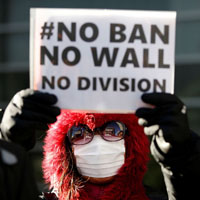
【CGTN】Chinese case key to deciding legality of Trump’s Muslim ban?
People participate in a protest against President Donald Trump’s Muslim ban at Columbia University in New York City, US on January 30, 2017. /CFP PhotoGuest commentary by Hichem Karoui Although a US court has suspended the Trump Muslim ban, and an appeals court rejected a White House request to reinstate it, the case is not over. The president still has several means to overturn the suspension and on Tuesday the US Department of Justice will be appealing again to have the ban to be reinstated.But irrespective of whether the ban is reinstated or remains suspended one needs to remember that Trump’s immigration executive order actually has a long history.In 2002 - the year following the tragic terrorist attacks on September 11 - the federal government created the National Security Entry-Exit Registration System (NSEERS).This federal program required non-citizen visa holders from certain countries (predominantly Arab and Muslim-majority nations) to register with the federal government. The registration process included fingerprinting, photographs, and interrogation. Once an individual registered, NSEERS required a person to regularly check in with immigration officials. Trump has been elected on a policy program. Those who put him in the White House expected him to fulfill his promises. Among which was the Muslim ban. In December 2015, as a Republican presidential candidate, Donald Trump made international headlines with his proposal to temporarily ban Muslim immigration to the United States. In the press release, Trump called for "a total and complete shutdown of Muslims entering the United States... until our country’s representatives can figure out what is going on." By "what is going on," Trump was mostly referring to a series of horrific and highly publicized terrorist attacks - including in Paris (France) and San Bernardino (California) - that had greatly deepened public fears about Islamic terrorism in the United States. He was also referring to the historic migrant crisis in Europe, and the US government’s plan to accept 10,000 mostly Muslim refugees, fleeing violence and poverty in the Middle East.A woman holds a placard to protest against US President Donald Trump’s Muslim ban near the US Embassy in Tokyo, Japan on January 31, 2017. /CFP PhotoWhether his Muslim ban is legal or not is now a subject of internal judicial assessment.The case may end up at the Supreme Court, which, according to Temple University professor, Peter J. Spiro, has never struck down an immigration classification, even on the basis of race.For Spiro, this disinclination to interfere stems from the Court’s infamous holding in Chae Chan Ping v. United States, an 1889 case in which the Court upheld the power of Congress to exclude Chinese laborers from immigrating to the United States on the basis of their nationality.In Chae Chan Ping, the Court established what has become known as the "plenary power" doctrine, reserving for the political branches of government the ability to "exclude foreigners from the country whenever, in [their] judgment, the public interests require such exclusion." While the policy of Chinese exclusion ended in 1943, many legal experts believe Chae Chan Ping technically remains law and continues to provide a basis for executive and legislative control over immigration.But not all US law experts are in agreement on what Chae Chan Ping really means to the current executive order.Some argue that although Trump’s ban would be struck down as an unconstitutional violation of religious freedom if enforced against US citizens, non-citizens outside the country are not necessarily extended that protection. The US Constitution does not provide the same set of protections to aliens outside US geographic borders.Others, like Constitutional Law Professor Lawrence Tribe of Harvard University, contend that constitutional protections do in fact apply to foreigners and that "targeting groups of persons, including non-US citizens, seeking to enter the US based on religion would violate the First Amendment."While the debate is raging, airlines have resumed flights to the US airports, carrying travelers from the seven banned countries. We will have to wait and see how long they continue to fly. About Author Hichem Karoui is Non-Resident Senior Fellow of the Center for China and Globalization(CCG), the largest independent think tank in China, with over 100 researchers and members of staff.From CGTN, 2017-2-7
2017年2月13日 -
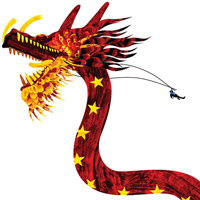
[People’s Daily Online]China should join TPP to promote economic diplomacy: experts
China should take the initiative to join the Trans-Pacific Partnership Agreement (TPP) and improve its relations with other countries via economic diplomacy, experts said.“TPP has some valuable standards that represent new trends of the 21st century, which we should respect, understand and even adapt to. In order to achieve high-level opening up, China should take the initiative to [join TPP],” suggested Huo Jianguo, former president of the Chinese Academy of International Trade and Economic Cooperation under the Ministry of Commerce, at a seminar held by the Center for China & Globalization (CCG) on Feb. 9.Huo’s remarks came after U.S. President Donald Trump signed an executive order to officially withdraw from TTP on Jan. 23, after strongly opposing the 12-nation trade agreement during his candidacy.“China should consider joining TPP as soon as possible, in an effort to promote the benign and steady development of the world’s economic system,” said Wang Xin, vice president of CCG.Promote economic diplomacyExperts believe that China’s growing economic power and its leading role in global finance has made economic diplomacy a better method to improve its geopolitical relations. According to China’s Bureau of Statistics, the country is responsible for 26 percent of global economic growth from 2013 to 2015. By the end of 2020, China will represent 30 percent of global economic growth, the Xinhua News Agency reported.Joining TPP would be a priority for future economic diplomacy, as China’s participation will not only strengthen mutual trust among countries in the Asia-Pacific region, but will also promote the launch of the Free Trade Area of the Asia-Pacific (FTAAP), experts argued.Meanwhile, the support of some TPP members offers China the opportunity to take on an elevated role in the group, as the confirmed withdrawal of the U.S. has caused great consternation in many countries.During an interview with BBC’s "Today," Australian diplomat Alexander Downer said his country’s government had approached a number of other countries in the group to discuss bringing in China to replace the U.S.“China should focus on opening up and reform to continue the steady growth of its economy. Through economic diplomacy, the country can seize the chance to increase its influence in international affairs,” said Huo.An active participant“Though it would be nice for China to join the TPP, we should also realize that China is not yet a leader, but more like an active participant,” said Zhang Yunling, a researcher at the Chinese Academy of Social Sciences.According to Zhang, China should maintain and improve the existing modes of economic cooperation rather than turning immediately to a completely new system. China should see itself as a participant in the world economic arena, and unite other countries to develop TPP.Zhang also suggested that China could promote the Belt and Road Initiative as a new mode of cooperation. The initiative could improve and supplement existing modes of cooperation, as evidence has shown that an open market is not sufficient to solve all problems related to economic development.“With great power comes great responsibility. It’s not the time for China to become a leader in the group, but China may still display active influence on international economic issues,” said Huo. From People’s Daily Online, 2017-2-9
2017年2月13日 -
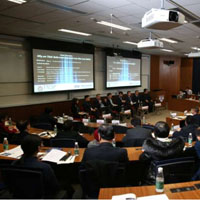
【参考消息网】中国智库全球排名升至第二位 仅次于美国
核心提示 在亚洲智库60强中,中国有18家智库上榜。在最佳政府智库75强中,中国有6家上榜,其中5家名列前20名。全球最值得关注的智库100强中,中国有5家上榜。 参考消息网2月10日报道 由美国宾夕法尼亚大学智库研究项目研究编写的《全球智库报告2016》1月25日在京发布。该报告显示,中国拥有智库435家,数量仅次于美国,位列世界第二。 根据报告,美国拥有1835家智库,保持智库数量世界第一;中国拥有智库435家,稳居世界第二;英国和印度的智库数量位列中国之后,分别为288家和280家。根据区域分布、研究领域、特殊成就三类标准,报告共列出52个分项表单。其中,中国智库上榜的表单数达到41个,与2015年相比增加了13个,反映出中国智库的良好发展态势。 综合排名榜单175强中,美国的布鲁金斯学会蝉联榜单首位。排名第二的是英国皇家国际问题研究所,该机构同时还被评为年度智库。中国有9家智库入选,包括中国现代国际关系研究院、中国社会科学院、中国国际问题研究院、国务院发展研究中心、上海国际问题研究院、北京大学国际战略研究院、中国与全球化智库(CCG)、中国人民大学重阳金融研究院等。 在亚洲智库60强中,中国有18家智库上榜。在最佳政府智库75强中,中国有6家上榜,其中5家名列前20名。全球最值得关注的智库100强中,中国有5家上榜。 另外,智库榜单也是世界政治经济实力版图的反映。美国以总计1835家智库形成了世界上规模最大的智囊资本,也即拥有了最强大的“软实力”。中国、英国、印度、德国、俄罗斯、日本等大国的智库也名列前茅。而西亚和北非地区总共只有398家智库,撒哈拉沙漠以南的非洲地区总共只有615家智库。 该报告由詹姆斯·麦甘博士领衔的美国宾夕法尼亚大学项目团队撰写,今年已是连续第十年为全球智库进行综合评价,在全球60多个国家的86个城市同时发布,是国际上一年一度最权威和最有影响力的全球智库报告。2016年,项目团队从6846家被提名智库中遴选出了175家进行全球顶级智库排名。评分标准参考了4750名新闻记者、政策制定者以及各领域专家的意见和建议。文章选自参考消息网,2017年02月10日
2017年2月13日 -
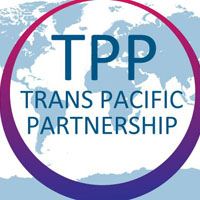
【亚太日报网】CCG智库建议:中国可考虑加入TPP
2017年2月9日,中国与全球化智库(CCG)在北京总部发布题为《中国外交进入新方位,可考虑加入TPP》的研究报告,报告分析了特朗普执政后中国所面对的国际环境,指出在中国外交进入新方位的历史时点,加入TPP可以成为中国当前经济外交的重要抓手。 美国总统特朗普执政1月20日执政以来,退出TPP等数个连签的行政命令、几十个国际首脑电话、天天推特制造了眼花缭乱的局面,也给美国和世界带来了更多的不确定性。 CCG秘书长苗绿博士认为,中国经济发展为实施经济外交打下了基础,加入TPP可以成为中国当前经济外交的重要抓手,中国应把握时机尽快加入TPP。 《报告》从多个角度分析了中国面临的新挑战和加入TPP对中国外交带来的新机遇: 首先,当前部分TPP成员国积极支持中国加入TPP,主动加入TPP可填补美国退出后的空间,通过经济外交改善国际关系; 其次,中美存在广泛、深厚的共同利益基础,主动加入TPP有利于FTAAP的构建和更全面的区域经济安排; 第三,特朗普向俄罗斯靠拢,有意在东亚等地制造潜在摩擦,主动加入TPP有利于凝聚儒家文化圈,改善与东北亚和东南亚国家的关系,促进亚洲一体化,推动“一带一路”战略倡议的深入实施; 第四,中国角色备受关注和期待,主动加入TPP可以进一步展示中国发展开放型世界经济,促进世界共同繁荣的决心。 亚太日报此前报道,澳大利亚和新西兰都曾表示,虽然美国退出《跨太平洋伙伴关系协定》(TPP),但两国要挽救此协定,鼓励中国及其他亚洲国家加入。对此,中国外交部发言人华春莹重申中国一直主张建设开放透明和互利共赢的区域自由贸易安排,“目前形势下,无论发生什么,都应该继续走开放,包容联动的发展道路。”(亚太日报记者 王国涛)文章选自亚太日报网,2017年02月09日
2017年2月13日 -
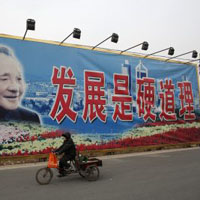
[East Asia Forum]A time of test for the China model of economic growth
The ‘China model’ of economic growth has been essentially a story of a hyper-charged economy led by an authoritarian state. But now the model has become unsustainable, with China experiencing economic slowdown as well as rampant corruption, growing inequality and environmental destruction.This is an ideal time for Chinese leaders to move the country’s growth model focus from exports and investment to qualitative internal development. It is also the time for the Chinese government to build institutional checks on state authority and boost accountability.If China can complete this transition on both fronts, the China model will stand. But a sustained economic downturn or a lost decade or two could mark the end of the China model.The notion of a China model first emerged in Joshua Cooper Ramo’s 2004 article ‘The Beijing Consensus’, which asserted that China had found a unique path to modernisation through a willingness to innovate, taking account of quality of life and providing enough equality to avoid unrest while refusing to let other Western powers impose their will.The China model notion re-emerged after the successful 2008 Beijing Olympics and the global financial crisis, which China weathered better than many Western countries. The China model became a popular term in the so-called ‘discourse of greatness’, which included terms like ‘the China miracle’ and ‘the rise of China’. But the Hu Jintao–Wen Jiabao administration avoided endorsing the China model, reflecting a hesitancy to engage in ideological debate and a concern over the emerging perception of the ‘China threat’.The China model has also been a central interest since President Xi Jinping came to office in 2012 and called for a ‘China dream’ of national rejuvenation. Xi’s China model promotes Chinese exceptionalism. According to Xi, because of China’s unique characteristics, only a quintessentially Chinese model can accommodate China’s national circumstances.The key issue in the China model debate is the role of the state, reflecting the long struggle of Chinese elites to build and maintain a powerful state.Since founding the People’s Republic of China, the Chinese Communist Party (CCP) has claimed the public mandate by building a centralised state to maintain order. But Deng Xiaoping’s economic reforms in 1979 decentralised many economic decision-making authorities. These reforms helped China’s economic take-off by creating market based resource reallocation efficiencies.More recently, a neo-authoritarian sentiment has emerged in China criticising the decentralisation of the state authority for weakening central planning bureaucracies and creating opportunities for some intellectuals to advocate liberal ideas from the West.President Xi has echoed this sentiment by significantly strengthening state capacity through concentration of personal power, anti-corruption campaigns, empowering state-owned enterprises and launching the largest ideological campaign against ‘Westernisation’ in post-Mao China. Xi has centralised policymaking at the highest levels of the party by moving a large proportion of decision making into small leadership groups. Underlying these moves is a recentralisation of power from Beijing and the CCP to Xi Jinping.Centralisation under Xi has allowed the Chinese state to utilise a much larger economic toolkit than its Western counterparts. China marshalled extraordinary resources into infrastructure, housing and transportation. The Chinese government was also much more effective in deploying enormous state capacity to ward off the global recession than its Western counterparts during the global financial crisis.But this economic growth has come with significant costs, including excessive human casualties, environment pollution and overcapacity as well as income disparity and moral disintegration.These costs have seen China enter a period of deepening social tension, marked by unrest and protests. With China’s economic growth now decelerating, Chinese leaders are increasingly fearful of China descending into chaos. Strikes and labour protests have already increased as bloated private and state-run enterprises lay off millions of workers.The Chinese government has deployed more coercive measures to maintain social stability. China’s spending on domestic security outstripped the defence budget for the first time in 2009 and has continued to hit new heights since then, showing the rising costs of maintaining stability. Xi has clamped down on social media, shutting accounts of labour activists, deleting news reports and monitoring chat forums. The state has also prohibited workers from establishing independent labour unions, severely persecuted activists and detained human rights lawyers.As China’s economy slows the costs of the China model of rapid economic growth are becoming less and less bearable, even to those who have benefited from its fruits. The existing model does not fit China anymore. This is evidenced by the growing numbers of China’s new rich who are choosing to emigrate abroad and take their money with them. Students are flocking to the West for a liberal college education.The real test for the China model is whether Chinese leaders are able to achieve transformation on both the economic and political fronts. China has come a long way since Deng Xiaoping initiated economic reforms in 1978, but now much needs to be done to create a more sustainable China model.About Author Zhao Suisheng is Academic Advisor of the Center for China and Globalization(CCG), the largest independent think tank in China, with over 100 researchers and members of staff.From East Asia Forum,2017-1-29
2017年2月13日 -
王辉耀:选才基数,从“13亿”变“70亿”
文 | 中国与全球化智库(CCG)主任王辉耀 日前,三部委联合印发《关于允许优秀外籍高校毕业生在华就业有关事项的通知》(以下简称《通知》),部分符合条件的优秀外籍高校毕业生无需工作经历即可在华就业。这是我国构建具有国际竞争力的人才制度优势、广纳天下英才为我所用的又一举措,是中国实施全球化人才竞争战略的重要一步。 近年来,随着中国经济实力进一步增强,我国逐渐成为国际人才的向往之地,外国人才集聚的态势逐年加强,我国的人才选择从过去13亿人中选才转向今天从全球70亿人中选才。中国与全球化智库在研究编撰的《中国留学发展报告(2014)》中就曾指出,若外籍留学生毕业以后不能直接在我国就业或创业,将在一定程度上屏蔽具有创新创业潜力的外国人才“苗子”,建议顺应世界人才国际化流动的趋势,放开外籍优秀留学生在华就业和创业的限制,我国也可以设置留学生实习签证、工作签证,允许短缺人才或居留达到一定年限、就业创业成绩出色的外国人才留在中国。 继过往两办印发《关于加强外国人永久居留服务管理的意见》、公安部出台支持北京等地创新发展出入境措施之后,这次三部委联合印发的《通知》对外籍高校毕业生在中国就业应具备的条件、办理程序、有效期、配额管理等做出了详细规定,在此前政策的基础上进一步放宽,并更加具体、务实。用人机构、高等教育机构等各类主体,外国来华留学生、有志来华工作的外籍学生等都将从中受益。 本次《通知》的出台,也加快了外籍人才评价引进机制的市场化探索,更加侧重评价人才实际工作能力及其为用人单位带来的贡献,不再局限于以往国家体制内引进海外人才的诸多条件。这也就赋予了各类用人主体更多的自主权,他们可以根据多层次、多元化的实际用人需要,市场化地选择最适合的人才,极大地便利了企业等用人主体在全球范围内延揽优秀的青年人才,增强了他们选聘国际人才的竞争力。 出国留学与来华留学并重,是留学工作的重要理念,但调研发现,来华留学非常突出的障碍之一就是外籍留学生无法在华实习、就业,无法获得工作、居留的通畅渠道和发展空间,降低了外籍学生来华留学的预期。《通知》的出台,放宽了外籍高校毕业生在华就业的条件,在解决这一问题上迈出了重要一步,将使更多有意愿来华留学的外籍学生看到融入的希望,从而积极选择来华留学。这将有助于减少留学赤字,并有助于高等教育国际化和来华留学体系的发展。 人才和创新是经济全球化的主导力量。目前,制约中国企业参与“一带一路”建设和“走出去”参与全球竞争的因素之一,就是缺乏跨文化的国际人才。吸纳来华留学生和海外高校毕业生在华就业、创业,可以储备和培养更多既有海外背景、又熟悉中国文化、国情的国际人才,促进全球人才环流。同时也向全世界释放了更加积极的信号,欢迎全球人才到更加开放的中国发展,共同实现中国梦。 接下来,我们还需逐步为来华留学生构建“留学—实习—工作—永久居留”的完整链条,进一步提高来华留学吸引力;同时为全球人才描绘清晰的中国梦蓝图,对优秀人才的认定范围更加开放,为我国创新驱动发展注入新的动能。文章选自《人民日报》,2017年2月9日
2017年2月10日 -
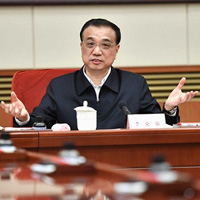
【央广网】为实体经济减负 涉企收费继续“做减法”
央广网北京2月9日消息(记者李硕)据经济之声《央广财经评论》报道,最近,娃哈哈集团董事长宗庆后的一番话受到热议。在一次接受采访时,宗庆后提到涉企收费负担重,每年企业要交的费用有500多种。尽管事后国家发改委和财政部对此进行了澄清,说娃哈哈集团最终缴纳的费用只有212项,并没有500项之多,但在经济下行压力犹在的当下,涉企收费较多较重,也是不争的事实。 在昨天召开的国务院常务会议上,李克强总理强调,要把大力清理和规范涉企收费与深化简政放权放到同等重要的位置,从源头上降低企业制度性交易成本。国务院部门要带头治“费”,切实起到“以上率下”的作用。 2013年以来,中央层面统一取消、停征、减免涉企政府性基金和行政事业性收费496项,地方取消收费600项以上,2015年以来又出台了一系列减少涉企经营服务性收费和企业社保费用支出的举措。但必须看到,目前收费名目仍然较多、乱收费等问题依然比较突出,加重了企业的负担。 为此,昨天的会议强调,必须尽快推出一批制度性、管长远、见实效的清费举措,加大审计、督查力度,坚决取消事业单位不合理收费,杜绝中介机构利用政府影响违规收费,行业协会商会不得强制企业入会或者违规收费。要抓紧建立收费目录清单制度,切实减少涉企收费自由裁量权。 就此话题,经济之声专访了会计审计学家、中国与全球化智库(CCG)特邀高级研究员张连起。 经济之声:我们说目前收费名目仍然较多、乱收费等问题依然比较突出,这主要表现在哪些方面? 张连起:“近几年来,减税降费既是振兴实体经济的一项重要举措,也是深化简政放权,推进放管服改革,推进供给侧结构性改革的重要举措。目前我们要想优化实体经济的发展环境,在很大程度上其实就是要降税减费,特别是减费。 去年以来,一些企业家和学者都针对涉企收费提出了很多观点。企业现在就像‘担担子上山’或者‘下雨天背着稻草走路’——越背越沉。我们看到,这几年各个方面也做了很多努力,2013年以来,中央层面统一取消、停征、减免涉企政府性基金和行政事业性收费496项,地方取消收费600项以上,但是各种名目的乱收费问题仍旧非常突出。主要包括几个方面:第一个是行政性收费;第二是中央层面的政府性基金;第三个就是红顶中介或者权力中介。 可以说,这些费用给企业造成了沉重的负担。像残障基金、绿化费以及水利基金等,都是中央各个部门设置的,主要原因就是原来我们国家的企业是以国有企业为主体,当税收无法保障一些公共项目或者公共服务时,我们就以费的形式,也就是‘准税收’的方式收费,这给企业加了担子。” 经济之声:从当前看,为什么大力清理和规范涉企收费如此紧迫? 张连起:“国际上有一个‘拉弗曲线’,一般情况下,提高税率能增加政府税收收入。但税率的提高超过一定的限度时,企业的经营成本提高,投资减少,收入减少,导致税基减小,使得政府的税收减少;当税费负担达到了一定程度,降税反而能带来税源。因此我们要让企业放水养鱼,固本培元,增加其内生动力,否则企业本来就处在盈亏的临界点上,一旦费用增加,它就更加难以存活了。 现在,除了制度性交易成本,还有税费成本、土地成本、用人用工成本以及物流成本等,这些综合成本本来就在不断增加,如果涉企收费不加紧‘做减法’,实体经济的压力就必然越来越大。而如果实体经济不再具备国际竞争力,中国经济就很难有国际竞争力。” 经济之声:国务院常务会议要求尽快推出一批制度性、管长远、见实效的清费举措。下一步涉企收费“做减法”该怎么做? 张连起:“我建议我们在现有的基础上下大力气,砍掉50%到60%甚至60%以上的涉企收费。现在,中央级的行政性收费和政府性基金目录有215项,这其中有绿化的,也有水利的,还有电价的。以电价为例,为什么我们的电价比较高?因为电价里有很多这样的基金,例如:国家重大水利建设基金、城市公用事业附加费、大中型水库移民后期扶植基金、小型水库移民后期扶植基金,还有可再生能源电价附加等。 在各地,地方政府也有它自己的理由来进行涉企收费,一个县公开的收费目录清单就有32项,而且大部分都涉企收费,这样,企业负担重是必然的。建立收费清单制度只是一个工具性的支持措施,我们更多的是要从源头出发,不要设立这么多的收费项目。 减税降费的关键在于要推出能感知、有温度的财税改革,让企业真正感觉到各种名目的收费在明显减少,让企业和群众感到实实在在的实惠。只有给企业添活力,让企业有内生动力,才能涵养税源、扩大税基,才能为企业带来可持续的财政收入。因此要把减税降费放在供给侧结构性改革的高度,放在贯彻稳中求进工作总基调和提高中国国际竞争力的战略高度来进行,只有这样,减税降费的各项措施才能‘落地生根’。”文章选自央广网,2017年2月9日
2017年2月10日